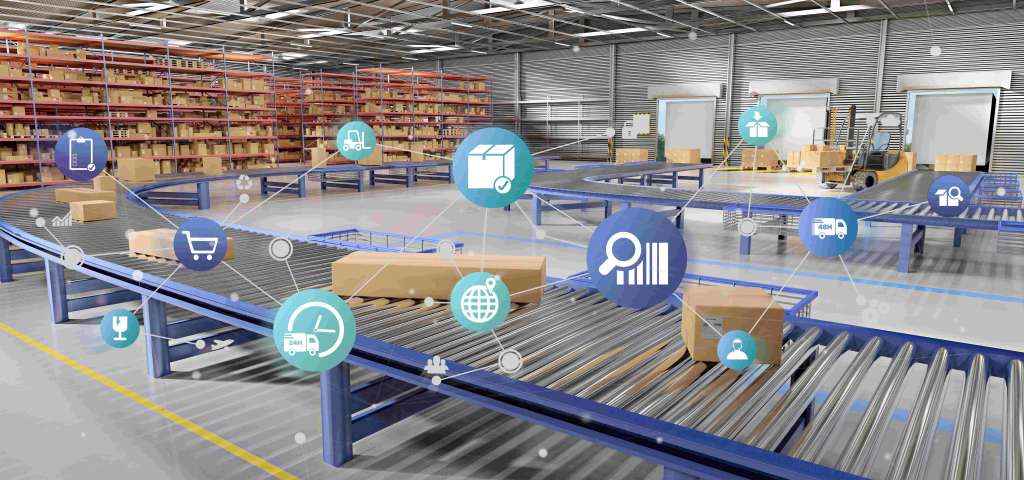Supply Chain Analytics—Collecting Data



Summary: Data plays a critical component in businesses with global procurement and distribution networks. AI-assisted data mining has enhanced the scope of targeted purchases and positioning of a clothing company. Let us understand the important primary and secondary data pools for supply-chain analytics.
Imagine the supply chain to be the brain of a fashion brand. It decides on every aspect of manufacturing, from procurement of materials to delivery of the final product. Supply chain analytics becomes the nerve center of this brain that relies on predictive data-based models to make real-time decisions. Just like the human senses, such as eyes and ears, data infrastructure is built on collection tools and centers.
With technology becoming more accessible and advanced, gaining insights into a dynamic marketplace has become more reliable and cost-effective. Whether it is cloud computing, machine learning or 5G internet, data collection and mining have become exceptionally fast. As a result, the operational silos within a supply chain have broken down, and predictive mathematical models have made operations more flexible and adaptable to changes.
How Data Mining Aids Supply Chain Management
Information is at the core of any business. For fashion brands with cycling changes in customer preferences and market trends, it is inevitable. Here are some of the key areas where data collection and mining in supply chain analytics come in handy.
- Identifying risks in time: Predictive models in supply chain analytics rely on data mining to forecast the changes in the market for uninterrupted procurement.
- Competitive pricing: Data analytics software improves operational efficiency. They optimize processes to reduce costs and go for sourcing at competitive price points.
- Supply chain integration: From cloud computing to AI, without data, there will be no analysis to integrate procurement with production, warehousing and shipping.
- Lean processes: Supply chains need to be trimmed. Analysis of data helps with procurement and logistics for better tradeoffs with suppliers and customers.
- Flexible and scalable: Data engineers can lend insight into the future for making hard u-turns. Brands can scale up operations based on pricing and demand.

Collecting Data in Supply Chain Analytics
We are, now, aware of how data is at the heart of supply chain analytics and management. Let us find out where and how data is sourced by companies to keep feeding their analytical models. For simplicity's sake, data can be divided into two types—primary and secondary.
Primary data collection
Data collected, first-hand, is primary data. This information is collected by the organization itself and is known as preliminary data. This information can be accessed from:
- Intra-organization processes: Every organization has its own processes and protocols for manufacturing. Together, they create a very comprehensive data field such as information corresponding to procurement costs from supplier/s, inventorying and shipment costs with delivery partners.
- Surveys: On-ground surveys and feedback systems are a powerful and eligible data pool for any organization. This data can refer to peer-to-peer data sharing between different manufacturers, delivery partners and customers.
- Institution-backed data: A company can gather information from certification agencies on quality control, and valuation of a supplier based on equity prices, among others. These are reliable data points for any organization.
Secondary data extrapolation
When a digitized information pool is not tapped at the source by the user and is authenticated by a third party, an intuitive software or an aggregator, we are looking at secondary sources of data.
- Data aggregators: The use of Artificial Intelligence (AI) in supply chain analytics has spawned a new branch of information technology that is dedicated to providing harvested and verified data to organizations. IT companies such as IBM and Oracle offer access to comprehensive and structured databases to clients worldwide. These data sets can be used to predict geo-political outcomes to customer behavior.
- Mobile data stream: Mobile phones have become an extension of our lives. Data streams from customer mobile phones, retail apps, and social media are powerful tools for aggregating data and refining the predictive capabilities of supply chain analytics. Collectively called data streams, these give an accurate insight into market dynamics and individual preferences.
- Application programs: Also known as Application Programming Interface or API, this software-based extrapolation of data is employed to extract and authenticate data. Basically, these are programming requests that correspond with data points for reliable information for robust supply chain analytics.
- Web harvesting: The web is a minefield of information. With intuitive AI and advanced tracking technology aided by web crawlers, companies can harvest data from the internet faster and more accurately. However, such information needs to be vetted and authenticated before it can be used for supply chain analytics.

Data Collection and Mining Bring Competitive Advantage
As a fashion brand, you would be interested in better production values at competitive costs, and quick and safe shipments. Data collection and mining play a critical role in ensuring these processes function smoothly and without glitches. While primary sources of data are reliable, they can be painfully slow to collect and process in a volatile market. This is where secondary data collection from verified aggregators and customer mobile streams can give an edge in manufacturing and shipping.
Key takeaways
- Data collection and feeding assist supply chain analytics by providing cross-functional information for data mining and interpretation.
- Mathematical models with data analytics need a constant flow of information. Data is collected by primary and secondary means which involves harvesting information from internal systems, aggregators, web scraping, and customer data.
- Data collection aids in data mining are invaluable for metrics and reference points, which are critical components of predictive and prescriptive supply chain analytics.
With its cutting-edge AI, Fashinza brings unparalleled data analytics to the table making your manufacturing effortless. From picking the best suppliers for global procurement to making reliable last-mile deliveries, you can trust Fashinza’s predictive and accurate data analytics.
Connect with Fashinza today for sourcing all your clothing materials.



















